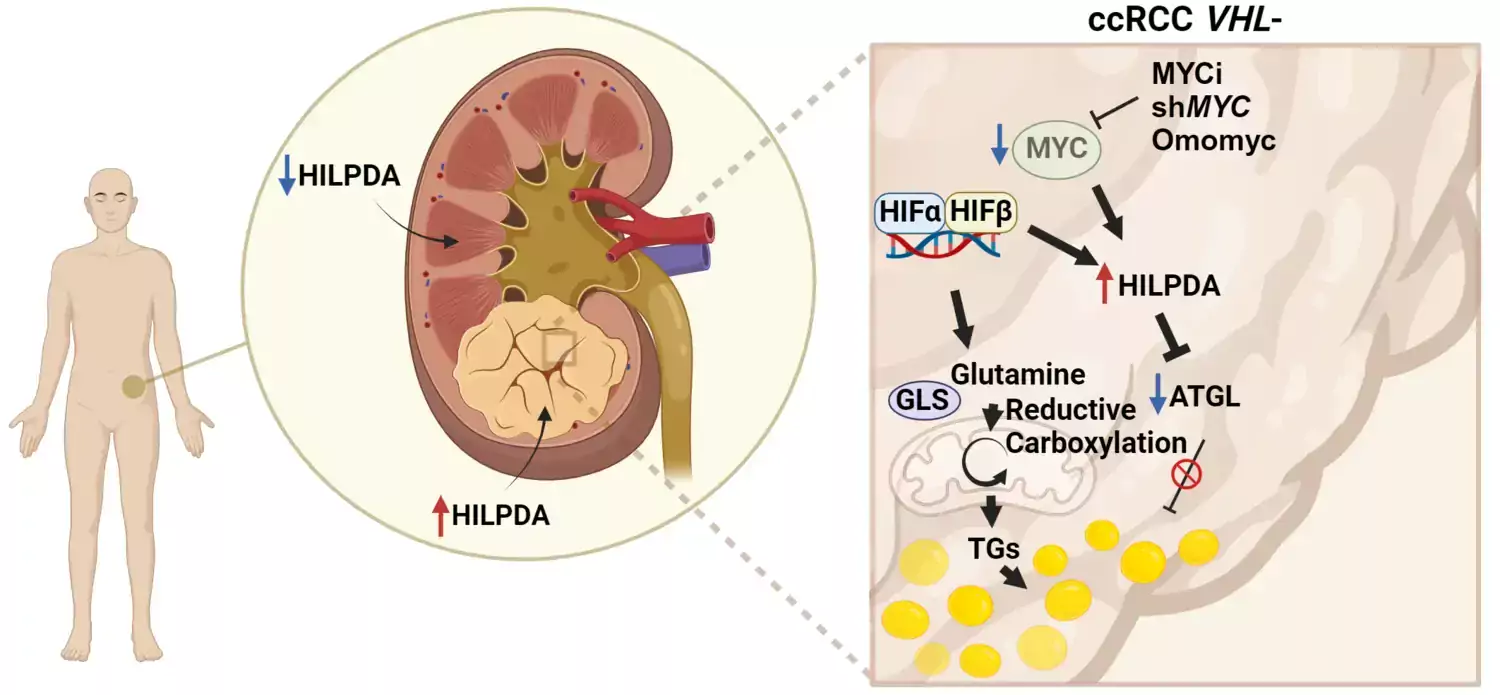The HILPDA protein: A potential biomarker for new treatment options in aggressive kidney cancer

A new study from Karolinska Institutet discovered that blocking the MYC tumor protein in kidney cancer cells leads to an increase in fat droplets, which are associated with tumor growth. The study provides crucial knowledge for identifying new therapeutic targets for treating this aggressive form of cancer.

The research group blocked the activity of the MYC protein in kidney cancer and observed an increase in fat droplets. They could then inhibit the formation of these fat droplets upon depriving cells of glutamine and found that this event occurs due to changes in the metabolism of the amino acid glutamine.
“We identified that the HILPDA protein controls this process and that it is specifically expressed in certain kidney cancer forms but not in the normal kidney. These findings are significant as they help to understand the mechanisms driving kidney cancer progression,” says Lourdes Sainero Alcolado, Post Doc and member of the Marie Arsenian Henriksson Lab at the Department of Microbiology, Tumor and Cell Biology at KI.
“We also examined the expression of this protein in other tumor types and demonstrated that HILPDA is only present in high levels in one specific aggressive form of kidney cancer, thus identifying this protein as a potential biomarker for future treatments,” says Lourdes Sainero Alcolado.
The research group aims to further investigate the role of HILPDA as a biomarker in kidney cancer.
“We will focus on how the fat droplets contribute to the cancer cell growth and resistance to cancer treatment. Another important question regards the healthy cells around the kidney tumor and how they support cancer. We will also explore potential therapeutic interventions targeting HILPDA to inhibit tumor growth. Together we hope that our research will become translated to a clinical setting for improved patient outcome,” Professor Marie Arsenian Henriksson concludes.
The main financiers of the study are The Swedish Cancer Society, The Swedish Childhood Cancer Foundation, Radiumhemmet Research Funds, Wallenberg Academy Fellowship, Vinnova, The Robert Lundberg Memorial Foundation, and Karolinska Institutet.
Publication
"Targeting MYC induces lipid droplet accumulation by upregulation of HILPDA in clear cell renal cell carcinoma”, Lourdes Sainero-Alcolado, Elisa Garde-Lapido, Marteinn Thor Snaebjörnsson, Sarah Schoch, Irene Stevens, María Victoria Ruiz-Pérez, Christine Dyrager, Vicent Pelechano, Håkan Axelson, Almut Schulze and Marie Arsenian Henriksson, PNAS, online February 9, 2024, doi: 10.1073/pnas.2310479121
